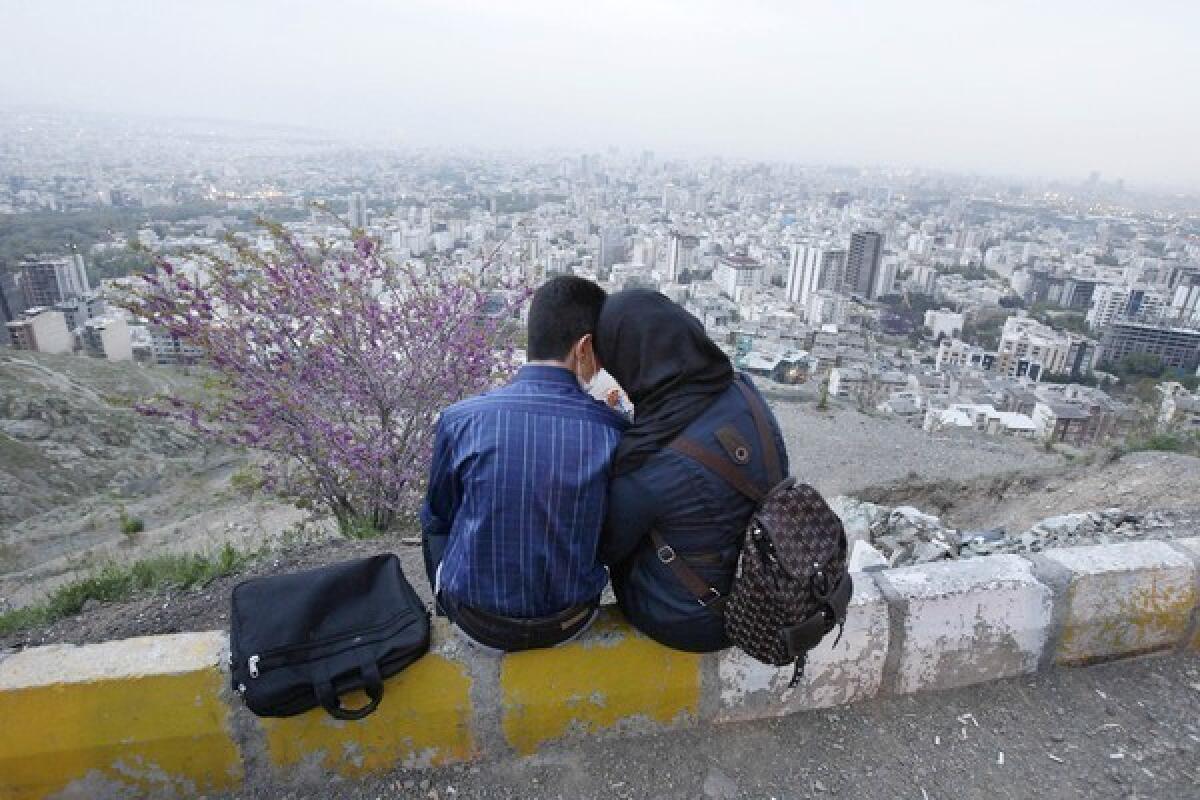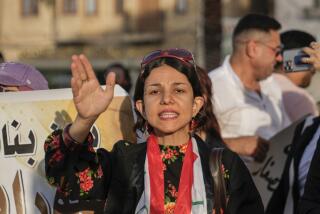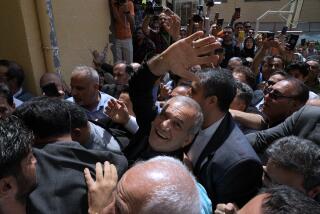Can matchmaking websites help Iran with ‘marriage crisis’?

TEHRAN — Iranian ministers have fretted for years about a “marriage crisis” in the country.
The average age when people wed has climbed since the Islamic Revolution of 1979, causing concern among officials, as well as family elders, that Iranians may stray from a traditional pious path by staying single too long.
Now a government minister says the country needs to legalize matchmaking websites to nudge Iranians to get hitched at younger ages. Mohammad Abbasi, the country’s sports and youth minister, recently said he hoped to come up with rules for what may amount to a sort of Match.com or eHarmony suited for the Islamic Republic.
“To tackle this problem, we have to find new solutions,” Abbasi said, according to Khabar Online news.
Official statistics show the average age that Iranian men marry has risen from 20 to 28 in the last three decades. Iranian women now typically become wives between 24 and 30, five years later than a decade ago, and perilously close to spinsterhood in this society.
Experts say the Iranian government has fretted over the trend because it sees delayed marriage as linked to loosening social mores. Young single people are a headache for authorities trying to maintain a religious state, who fear that the longer young adults are single, the more likely they are to indulge in premarital sex or other perceived vices.
Legalization of matchmaking websites, which many scholars doubt will alter the trend of delayed marriages, is being imagined as a way of fostering more traditional marriages.
Though many Iranians continue to look to families to approve their matches, and arranged marriages still happen, especially in small towns, Iranians in cities often meet their mates in the same kinds of settings that Westerners do — on college campuses, at private parties or in public places — and get their families to approve them after the fact.
Some illegal websites for Iranian singles are blocked by the government, making them accessible only with technology that dodges the restrictions. Many of the sites are geared to helping Iranians find partners for sex through “temporary marriage” rather than spouses.
Also troubling to the government, divorce rates surged to a national average of 16.3% last year, jumping more than 4 percentage points. Center for Demographic Studies deputy minister Shahla Kazemipour bemoaned the figure as “an alarming development.” In Tehran, 1 in 3 marriages ended in divorce.
Scholars have tied the trends to several changes: Women were urged to have fewer children during a population crisis decades ago, causing the most dramatic drop in fertility ever seen. As the change stuck, women became more likely to pursue careers and other interests. Women also started enrolling in Iranian universities at higher rates than men.
“Women’s expectations are different,” said Janet Afary, professor of religious studies at UC Santa Barbara. “The whole idea of what marriage is has changed.”
Many men, in turn, are waiting to wed because of unemployment and economic strain, a problem that has worsened as Iran has been pinched by sanctions. Grooms are also expected to foot the bill for lavish wedding parties and mahrieh, a promised number of gold coins that the wife can demand later, typically only if the marriage sours.
For some, it’s just not worth it.
“These days, if a man has got a good car and a furnished apartment, he can have sex free of charge after a couple of times eating out in good restaurants,” said Mohammad, 36. “So why should I bother myself to marry a girl?”
Reza, 25, said he hopes to save enough money to marry in five years or so. He works for his father as a clerk in a real estate office and wants to have his own apartment and a job that pays well before finding a good wife.
“I have enough time,” he said.
Women, increasingly uneasy about their lack of power in marriage, have demanded higher and higher mahrieh as a sort of insurance policy, with promised sums ranging from $10,000 to $350,000, said Djavad Salehi-Isfahani, an economics professor at Virginia Tech who studies Iranian families. Though the groom doesn’t have to pay the pledged money upfront, failing to do so can put a chill on wedding planning, a sign that a man isn’t economically steady.
“I have several boyfriends, but none of them could be my husband as they could not afford to raise a family,” said 32-year-old Saeede. “I’ve almost given up finding a suitable husband.”
She’s had surgery to make her nose look more European, she said, and might go back to college to increase her chances of finding the right man, “God willing.”
President Mahmoud Ahmadinejad has championed mass marriages that make nuptials less expensive, offered loans for weddings, and said that his children had inexpensive weddings. But experts say economic woes go much deeper than wedding expenses.
“Mahrieh is not that important. If you want to marry, you marry,” said Jalal Abbasi-Shavazi, a professor of demography at Tehran University. “The cost of living is putting much more pressure on young people than the cost of marriage.”
Special correspondent Mostaghim reported from Tehran and Times staff writer Alpert from Los Angeles.
More to Read
Sign up for Essential California
The most important California stories and recommendations in your inbox every morning.
You may occasionally receive promotional content from the Los Angeles Times.










